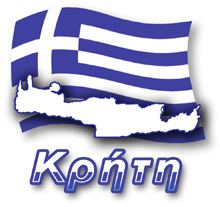
Hersonissos is one of the largest and also one of the most popular tourist destinations in Crete. It is located just over 20 km east of Heraklion airport. Every year, this town is chosen by thousands of tourists as a holiday destination. Recently, one of our readers asked for interesting places near Hersonissos that are worth visiting.
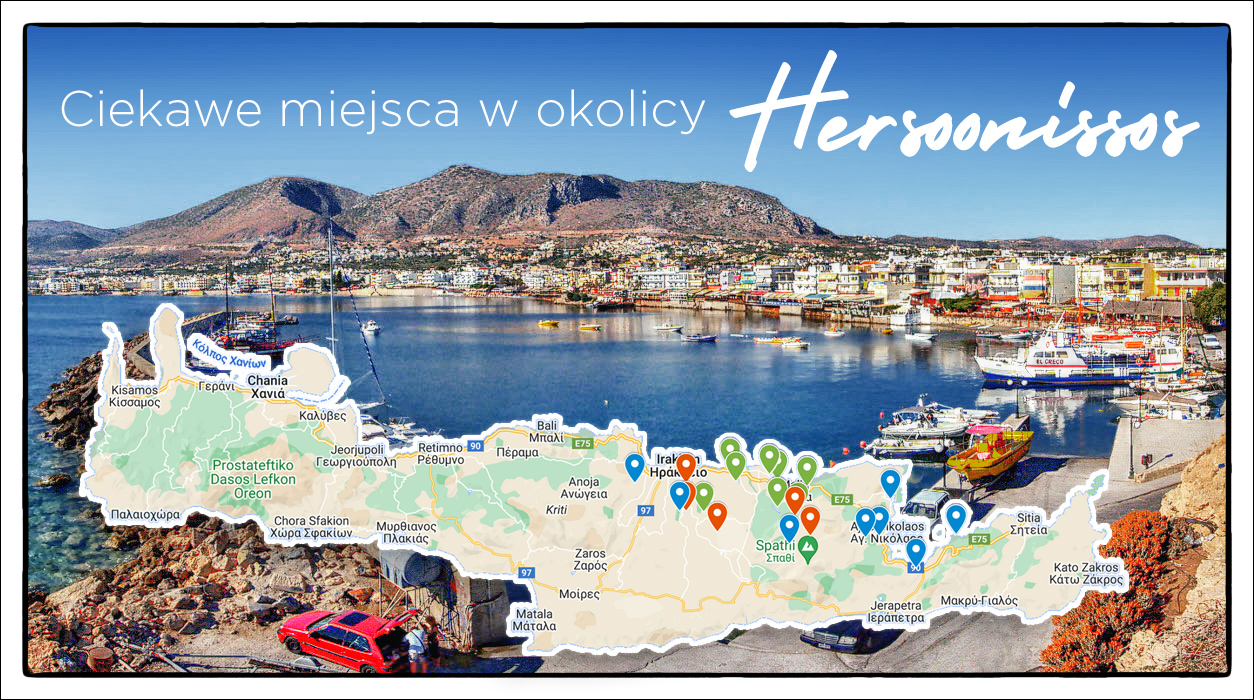
So we have prepared a list of points that are worth keeping in mind. We have grouped them according to their distance from Hersonissos. In addition to the short descriptions below, we have also marked their location on the map. Thanks to the filters available on the map, you can only display those located within 20 km, 40 km and 100 km. We have not marked interesting places located more than 100 km from Hersonissos, because in this case it is better to use our Interesting places in Crete tab.
Of course, this list is not exhaustive and if you would like to suggest other suggestions, please write them in the comments. Moreover, as always, we encourage you to discover interesting points on the tourist map of Crete.
An open-air museum dedicated to traditional Cretan architecture, crafts and contemporary art. When spending your holiday in Hersonissos, it is worth visiting.
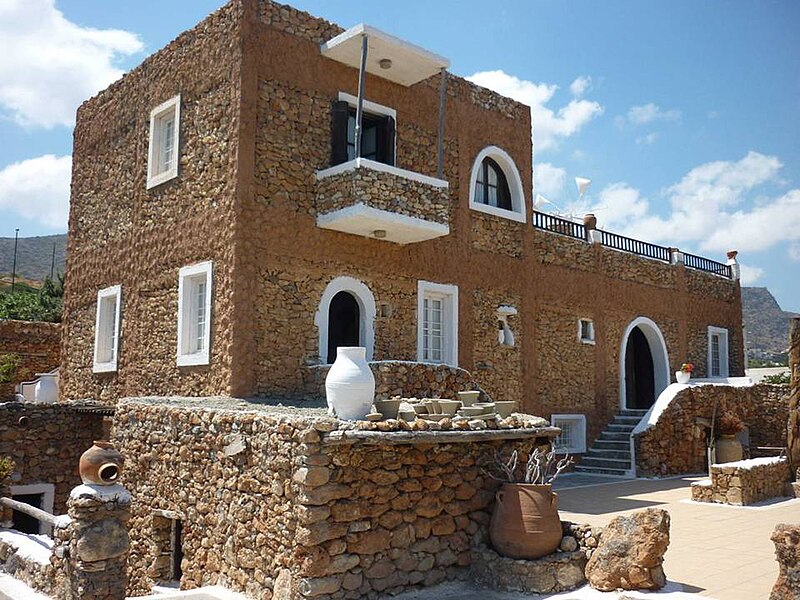 Creative Commons Attribution-Share Alike 4.0 International license
Creative Commons Attribution-Share Alike 4.0 International license
A place where various sick or injured animals found shelter. Interestingly, in addition to the opportunity to watch the animals, the staff also encourages direct interaction with them. A great place for both adults and children. Before your visit, it is worth visiting the aquarium's website: aquaworld-crete.com
A small archaeological site of the ancient city of Hersonissos with the remains of a theater. It is worth taking a look at them while walking, even though the ruins are fenced. Perhaps one day this place will become a greater attraction for antiquity lovers. Currently, archaeologists are still working here.
Off the beaten track of the tourist town of Malia, there is the third largest Minoan palace on the island. This is a must-see for history and archeology lovers.

This aquarium is an opportunity to learn about the underwater world of the Mediterranean Sea. On an area of 1,600 square meters, there are currently 60 aquariums with capacities ranging from 125 liters to as much as 900,000. Visitors have at their disposal 100 trained observation points where they can observe the lives of 2,000 different sea animals representing 200 species. The largest spherical window measures 9 x 2 m.

A museum dedicated to the most famous Cretan poet and novelist. His famous works popular in Poland include Zorba the Greek and The Last Temptation of Christ. Timeless film adaptations were also created based on these novels and conquered world cinemas. Before your visit, visit the museum's website: kazantzaki.gr
Skotino is one of the largest and deepest caves in Crete. However, it does not have any tourist infrastructure, so if you are interested in such atmosphere, it is worth taking a flashlight, good shoes, and not going too far into the underground labyrinth.
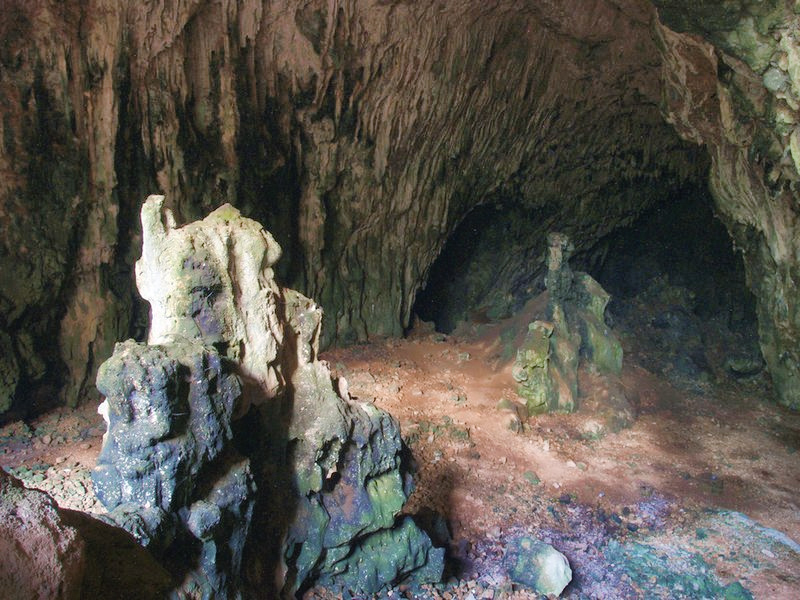
Until recently, this town did not stand out in any way compared to other nearby villages in this region of Crete. Just a dozen or so old stone buildings closely surrounding the ancient church located in its center. Over the last dozen or so years, thanks to the Aposelemis dam built next to it, the situation has changed dramatically. The water slowly filling the reservoir consumed part of the mountain slope on which this village is located. Currently, it is a ghost village that hides and emerges from the water depending on the filling level of the dam.
A traditional Cretan village with stone fountains and a group of three plane trees. Among them, the oldest one stands out, estimated to be approximately 2,400 years old. The circumference of its trunk is also impressive, as it is over 24 meters. Local taverns are located in the shade of its spreading branches. If you visit Krasia, it is also worth walking through the streets of the village.
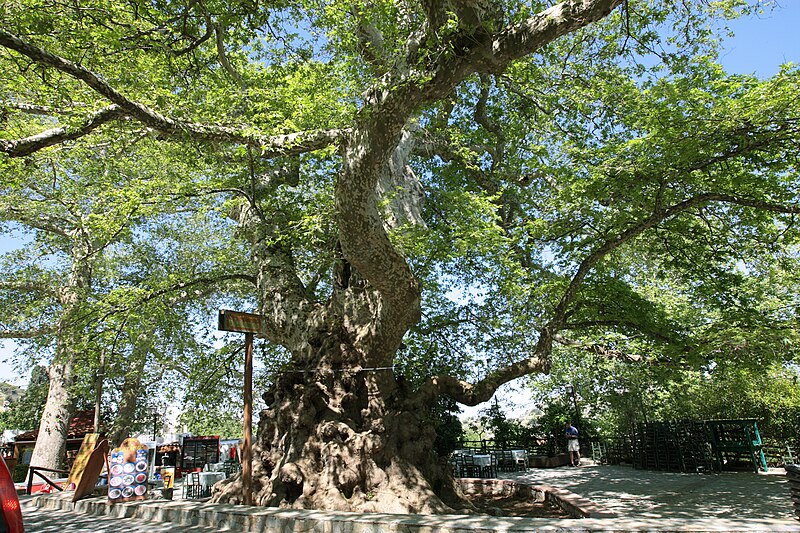 Creative Commons Attribution-Share Alike 3.0 Unported license
Creative Commons Attribution-Share Alike 3.0 Unported license
The monastery, founded in the Byzantine era, is an interesting place worth visiting. The icon of Our Lady Kardiotissa is kept here and is believed to have the power to heal the sick. The icon was apparently taken to Constantinople by the Turks three times. Each time, however, she returned inexplicably to the monastery. After the last theft, the determined Turks chained the icon to a stone column. However, even this security was not sufficient. According to stories passed down from generation to generation, the icon also returned to the Kardiotissa monastery along with the chain and column to which it was chained. A fragment of this column can be seen in the monastery courtyard.
I don't think this place needs to be advertised to anyone. The most famous, largest and at the same time most controversial Minoan palace in Crete. A must-see on the tourist map.
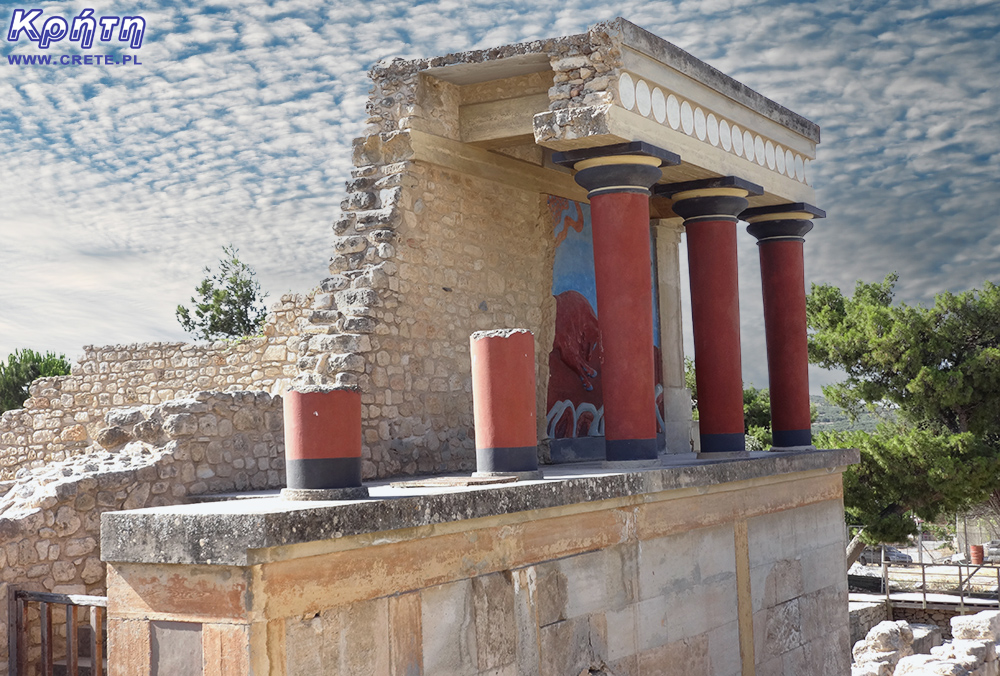
A traditional Cretan village with ancient roots, famous for its wine production. In addition to picturesque streets, you will also find a small Archaeological Museum, the Museum of Cretan History and Tradition and the Church of Our Lady with icons from the 16th to the 19th century. Fans of antiquity can also look at a small Minoan palace from behind the fence.
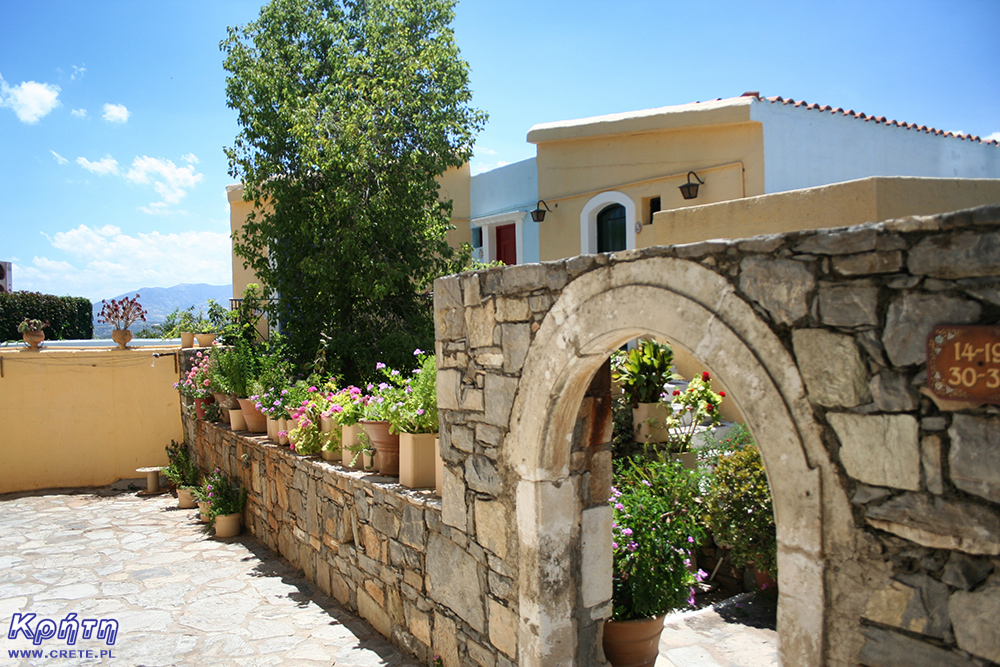
One of the main pilgrimage sites in Crete. On July 17, a huge annual celebration takes place here, to which many people come on foot from many distant places in Crete. The patroness of the monastery takes care of the sick and children. The Agia Marina Monastery was built in 1901 on the site of a small old chapel which, according to tradition, housed a miraculous spring.
In ancient Greek mythology, this cave is considered the birthplace of Zeus. More tangible evidence was provided by archaeologists who found traces of human activity here dating back to Neolithic times. In addition, the cave is distinguished by beautiful dripstones, which are worth seeing. The cave is adapted to tourist traffic and it is worth visiting it this summer, because it will be closed to visitors from September and next year for renovation. Additionally, when you come to the cave, you will have the opportunity to see the picturesque Lassithi plateau.
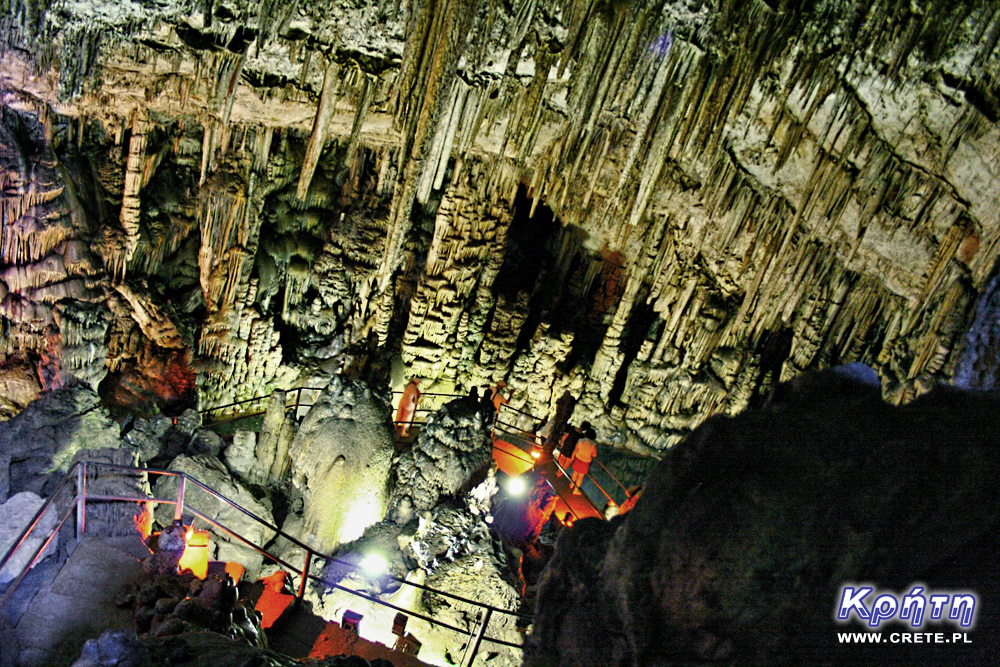
One of the most important tourist places in Crete. A former island where leprosy patients were sent. The fairy-tale scenery and sad history of this place make it second only to the palace in Knossos in popularity. When visiting this place, it is worth remembering that until 1957 it was a colony for about 2,000 people infected with leprosy. The discovery of drugs for this disease caused the number of patients on the island to slowly decrease, and in 1957 the last of the most seriously ill and maimed by leprosy were transferred from Spinalonga to a hospital in Athens.
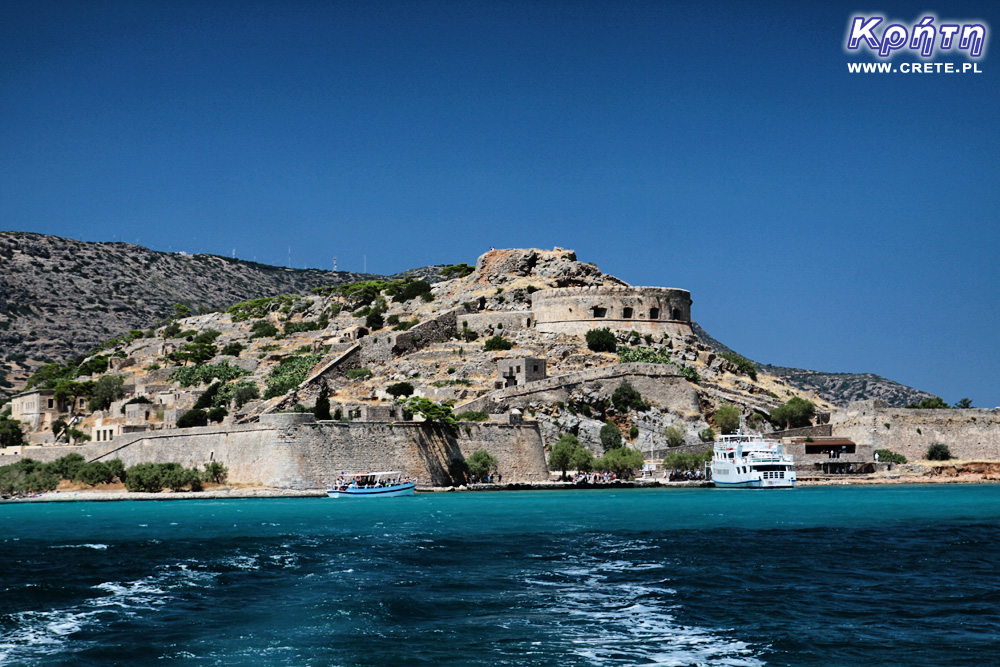
Oliwa Park is located approximately 2 km outside Agios Nikolaos. This place will be of interest to those who are interested in olive oil production and who are looking for local products of great quality. In addition to learning about the technical side of olive oil pressing, you will have the opportunity to test it. This is a relatively new point on the map of Crete's attractions, which is worth visiting, especially since its creators have been producing olive oil for years, which has been awarded in various prestigious competitions. Additionally, people who attended the Greek Panorama in Warsaw may remember the Physis of Crete company and its products from this event. Oliwa Park is open between 9 a.m. and 5 p.m.
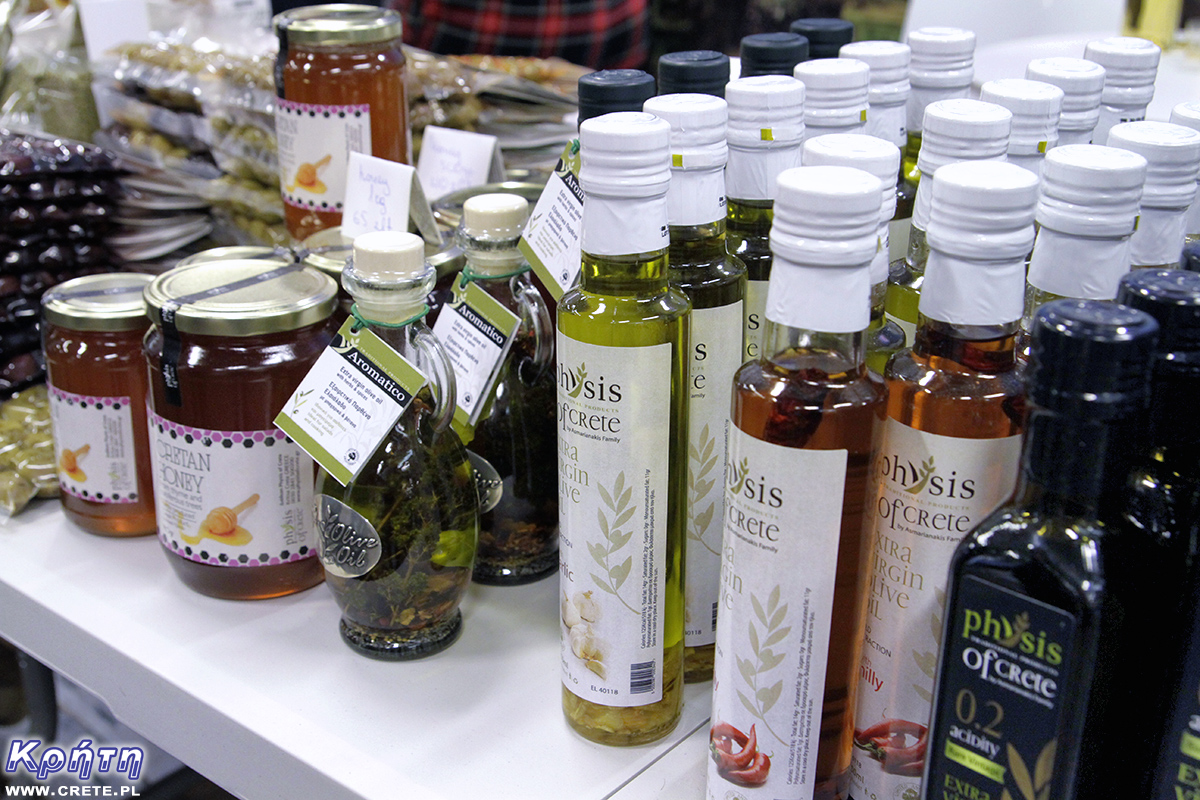
Lato houses the ruins of the Doric city-state, which is one of the best-preserved cities from the Hellenistic period. In its heyday, it was also one of the strongest cities in Crete. These are excavations worth visiting when in this area.
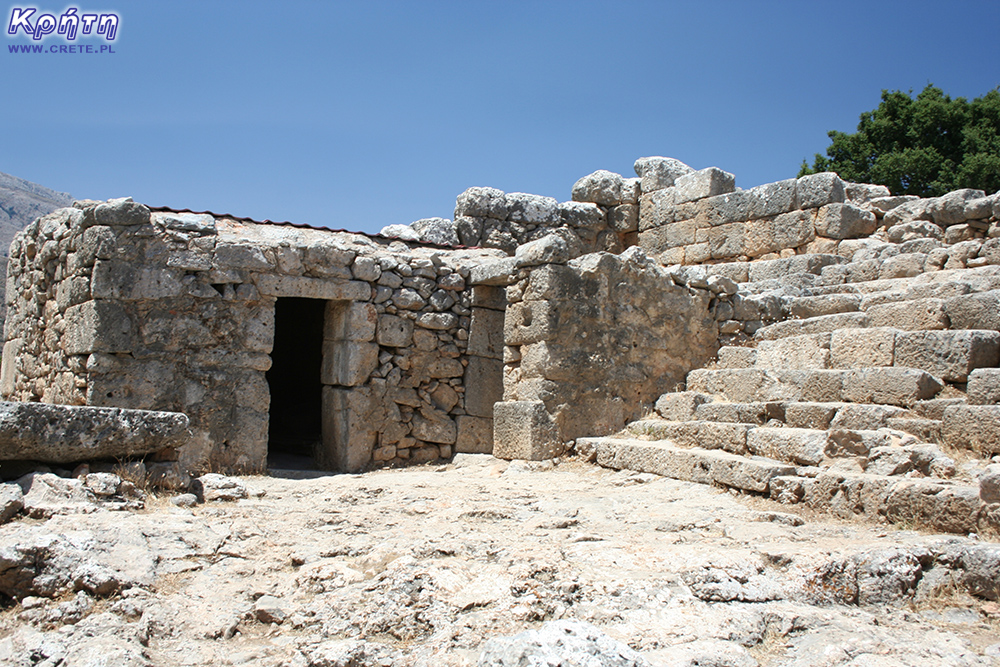
We describe this place as an excavation site behind the fence - because the ruins of this ancient villa are located between the fields and courtyards of Cretans living here today. For this reason, Tylissos is probably the most surprising place we have visited in Crete. A place we recommend to lovers of all kinds of excavations.

It is a small town located approximately halfway between Agios Nikolaos and Sitia. Mochlos is an extremely peaceful, picturesque place, full of Cretan atmosphere. The perfect place to grab a coffee or a meal, enjoy the views and relax.
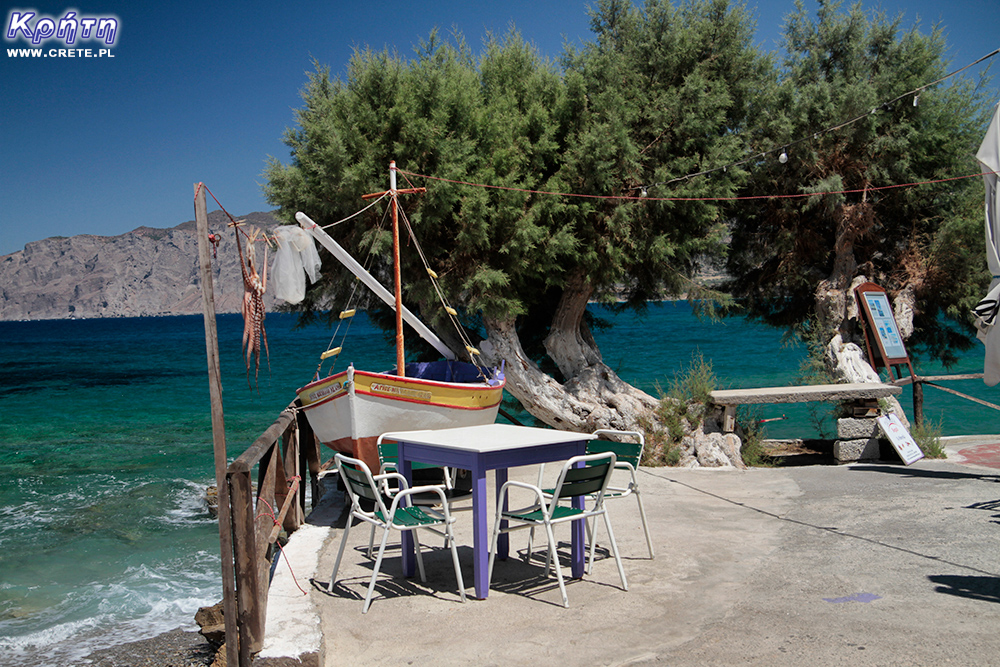
Ancient Gournia is the remains of an ancient city, which is one of the few that has been excavated to such an extent. In other more important places, archaeologists generally focused on discovering palace buildings, while in Gournia they discovered urban buildings, residential houses and a network of roads on which you can walk, as ancient inhabitants did.
The Holy Mountain of the ancient inhabitants of Crete, rising to a height of 811 meters and the only mountain in the Heraklion area. If you look at it from the sea, its profile will evoke associations with a human face looking at the sky. The Minoans believed it was the face of Zeus. Two sanctuaries were found here from ancient times. In one of them, a human skeleton with a knife stuck in it was found lying on an altar. This is apparently evidence of human sacrifice by this civilization. If you like demanding trekking, you can try to do a loop around Mount Juchtas. It can be steep and technical, so we don't recommend it for a family walk, only for mountain enthusiasts who take good shoes with them on holiday.
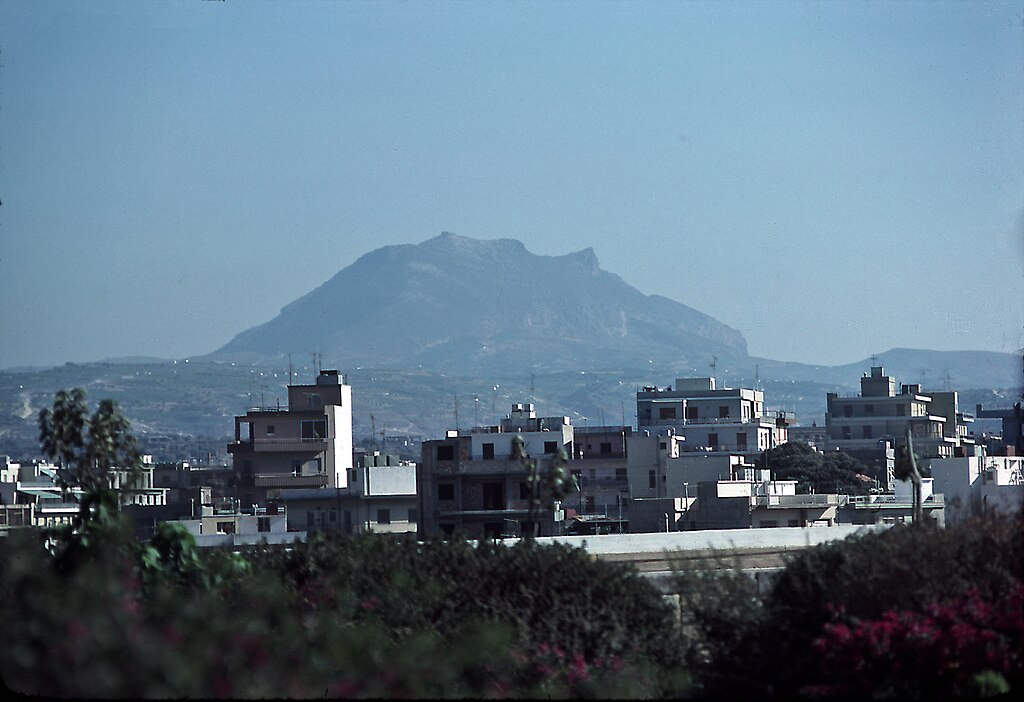 Creative Commons Attribution 3.0 Unported license
Creative Commons Attribution 3.0 Unported license

Everyone who sailed to Balos from this trip certainly remembered the wreck of the ship located on the island of Imeri Gramvousa. Today, few people remember his name and the history of events from January 8, 1968, which caused him to be in this place.
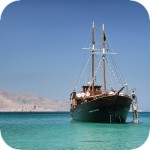
Koufonissi is a small island in the Libyan Sea, located just a stone's throw from the southern coast of Crete. Due to the natural shape and beauty, it can be easily added to the list of tourist attractions that are worth seeing for yourself.
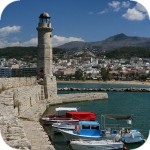
The old Venetian port and the lighthouse are one of the most recognizable elements of Rethymno. Although there are many beautiful places in the city, this area is one of the most picturesque and most important areas of the old part of the city.
Komentarze
Wioski
Jak dla mnie całkiem ciekawe są wioski powyżej Chersonissos, w szczególności wieczorem, tj. od zachodu: Stare Chersonissos, Piskopiano, Koutouloufari, z Chersonissos można spokojnie zajść piechotką. Brakuje mi też uroczej wioski Sisi z całkiem fotogieniczną zatoczką. Wg. mnie jedna z ładniejszych plaż na północnej Krecie jest Voulisma w Istro (trochę za Agios Nicolas).
Atrakcje
Jak dla mnie całkiem ciekawe są wioski powyżej Chersonissos, w szczególności wieczorem, tj. od zachodu: Stare Chersonissos, Piskopiano, Koutouloufari, z Chersonissos można spokojnie zajść piechotką. Brakuje mi też uroczej wioski Sisi z całkiem fotogieniczną zatoczką. Wg. mnie jedna z ładniejszych plaż na północnej Krecie jest Voulisma w Istro (trochę za Agios Nicolas).
Dzięki za podrzucenie swoich propozycji :) Każde z tych miejsc zasługuje na uwagę.
Wypełnij poniższy formularz aby dodać komentarz
lub kliknij w poniższy link aby skorzystać z możliwosci komentowania przez facebooka:
https://www.facebook.com/crete.poland/posts/866782568829342